South Coast Orchid Society
The Kay Francis Archive:
Overview
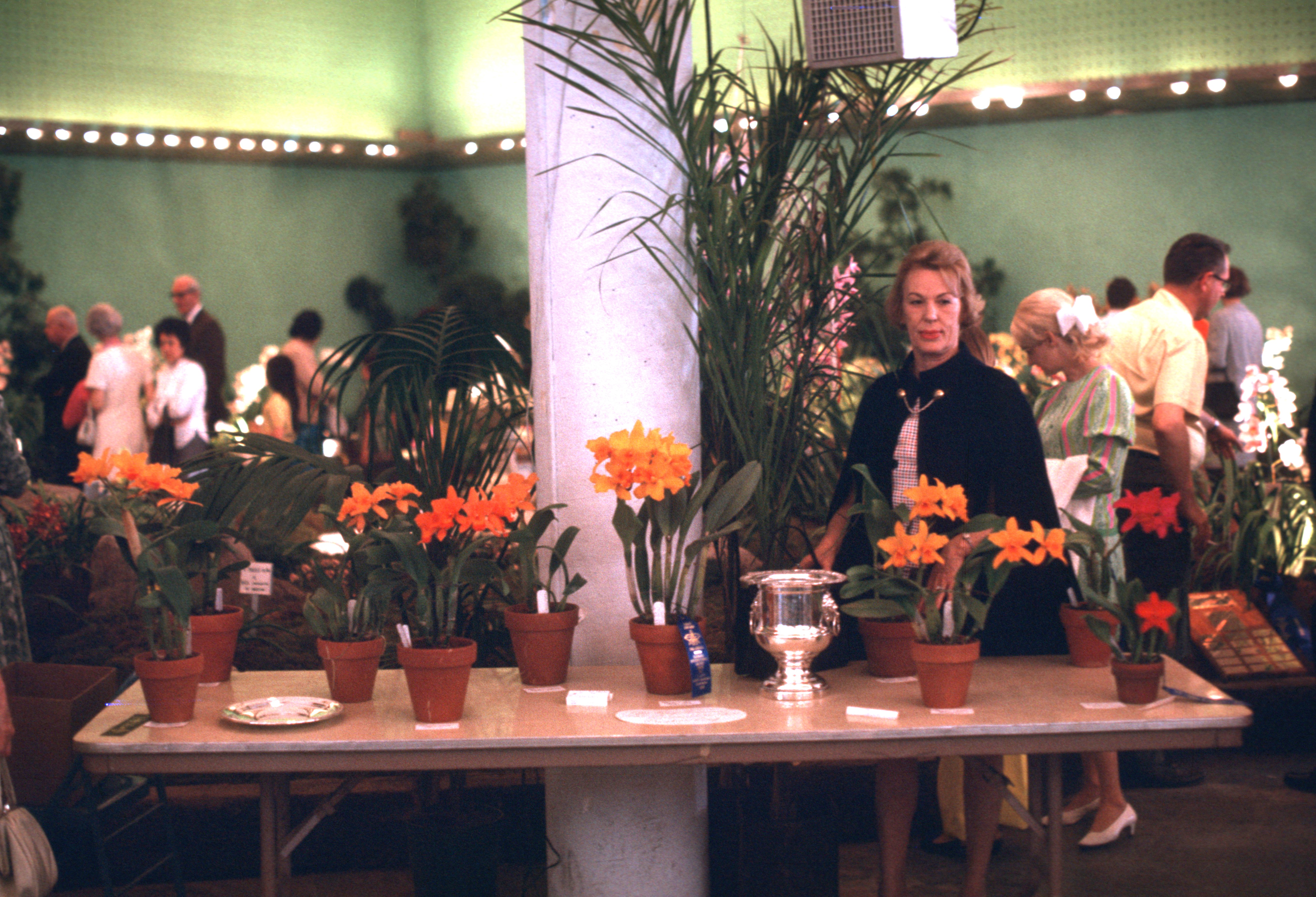
Kay with her exhibit and awards, Southland Orchid Societies Show, June, 1969

Scenes from a life with orchids
How the archive came to us
Kay and Fred Francis had one child, a daughter Eleanor, who studied geology at Occidental College, and who, shortly before she would have graduated, got a job at CalTech, which turned into a career as an astronomer at the Jet Propulsion Laboratory (JPL). Eleanor, known to everyone as "Glo", began searching for asteroids, eventually discovering around 900 of them (biographies on the internet: Wikipedia, the Planetary Society, and others). "Glo" married Ronald Helin; they had one child, a son Bruce Helin, who eventually fell heir to the voluminous papers and memorabilia of his mother and grandmother. Realizing our interest in local orchid history, Bruce contacted us for assistance in preserving his grandmother's legacy.
What's in the collection
- Over 2,600 color slides, the majority unlabeled
- Breeding records
- Ribbons and award certificates
- Correspondence, cultural notes, other photographic materials
- Memorabilia from the 5th World Orchid Conference in Long Beach, CA (1966)
- Nursery catalogs and plant lists
What do you do with over 2,600 color slides?
The slides were in about 100 small yellow "Kodak" boxes and two albums, with little or no organization. A first inventory spreadsheet captured the original location of each slide, box by box, along with stamped Kodak processing marks (usually year, month, coded processing site, and slide number within the roll), and any labels. About ⅓ of the slides had labels at this stage. The spreadsheet was then sorted by year, month, processing site, and slide number, so that the slides from the same roll could be considered together. It was necessary to resolve duplicate processing data as well, when more than one roll had been processed on the same machine at the same time. Next, data from labeled slides was used to derive labels (added to the slides in pencil, to distinguish them from the original labels) for unlabeled slides that showed the same flower or other identifying marks from the same roll or for slides from other rolls processed about the same time, or from other rolls where the identifying information was sufficiently distinctive. After updating the spreadsheet, about 80% of the slides have been identified, and many of the remaining "unidentified" Cattleya-alliance hybrid photos can probably be identified with further study.
The present state of the collection
The collection came to us in several installments. Almost all of the material has now been organized into sections and segregated into archival-quality containers. In addition, the family retains other materials, such as an array of silver trophy platters and cups, oil paintings, etc.
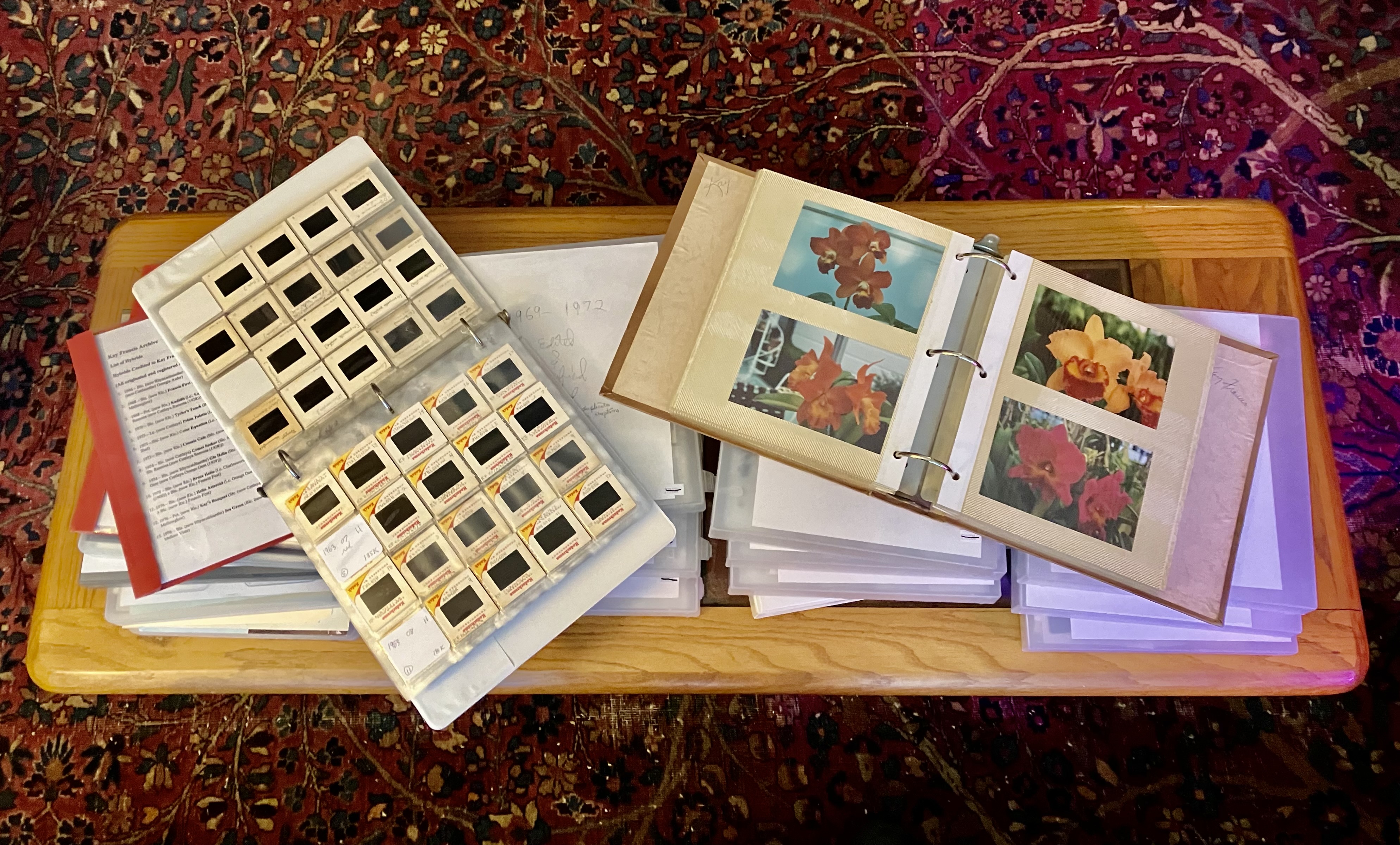
© 2024 SCOS
The Kay Francis Archive
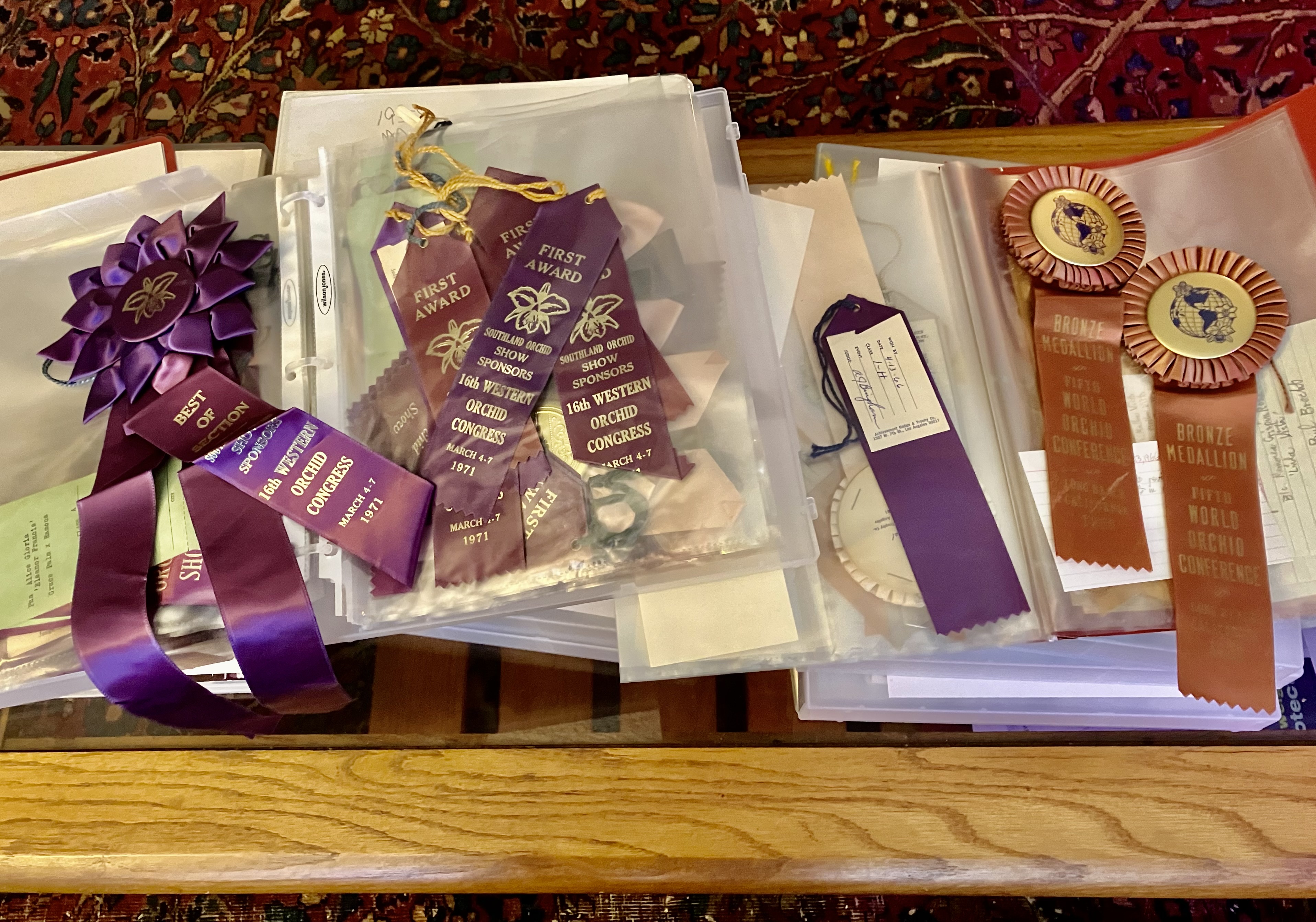
© 2024 SCOS
A selection of ribbons from the Kay Francis Archive
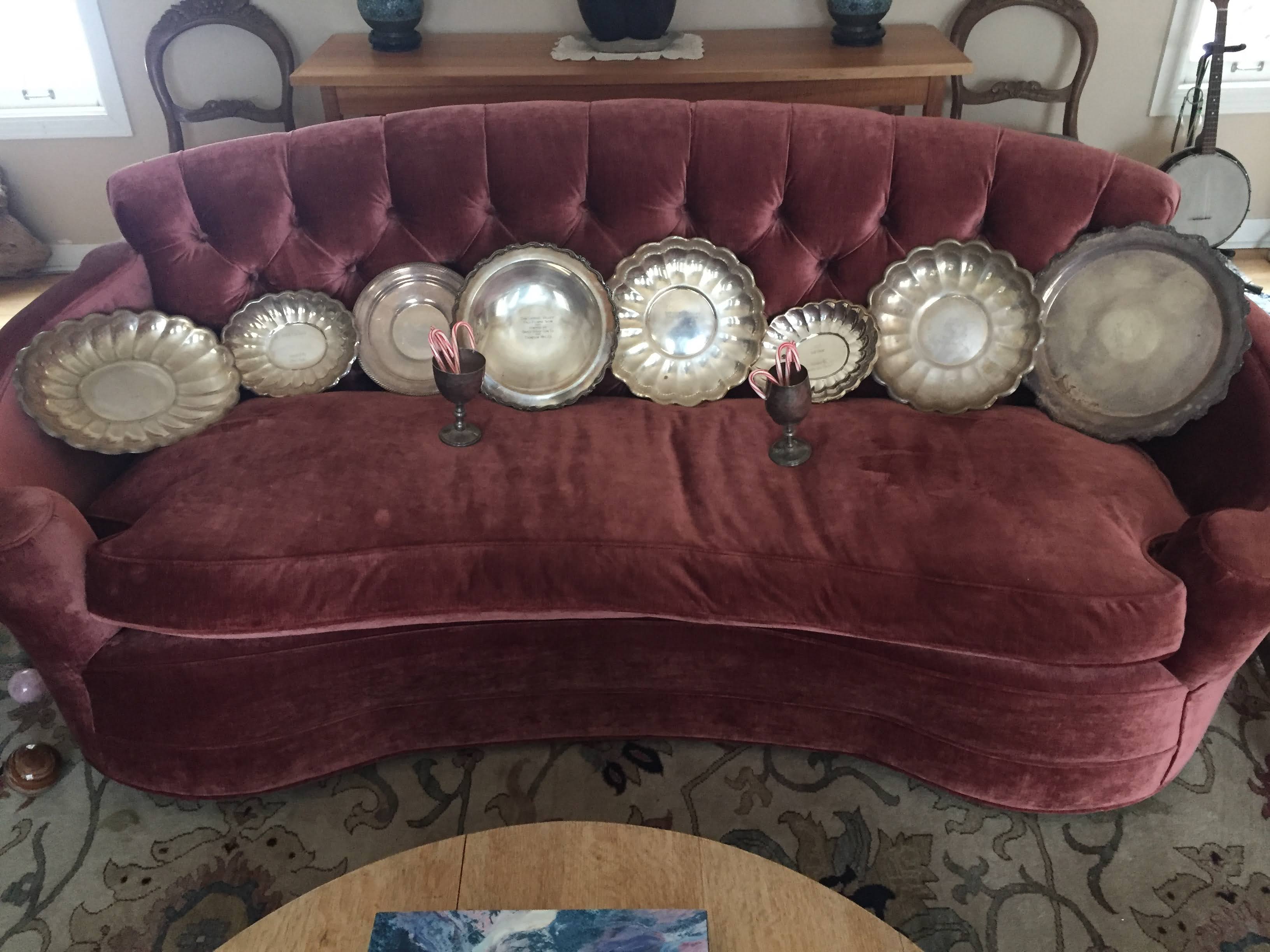
© 2023 Bruce Helin
A selection of Kay's trophies
Kay Francis and Southern California orchid life
Kay is mentioned in surviving newsletters and other memorabilia from South Coast Orchid Society in Long Beach, meeting then as now on the evening of the fourth Monday of the month, and the Orchid Society of Southern California, meeting on the second Monday of the month, at that time in Hollywood. The archive contains ribbons, certificates, and slides that place her at a number of shows and at specific SCOS or OSSC meetings for AOS or ODC judging.
Two events of special significance are documented in the collection: The September, 1963 charter tour to Hawaii, organized by SCOS, and the 5th World Orchid Conference in Long Beach.
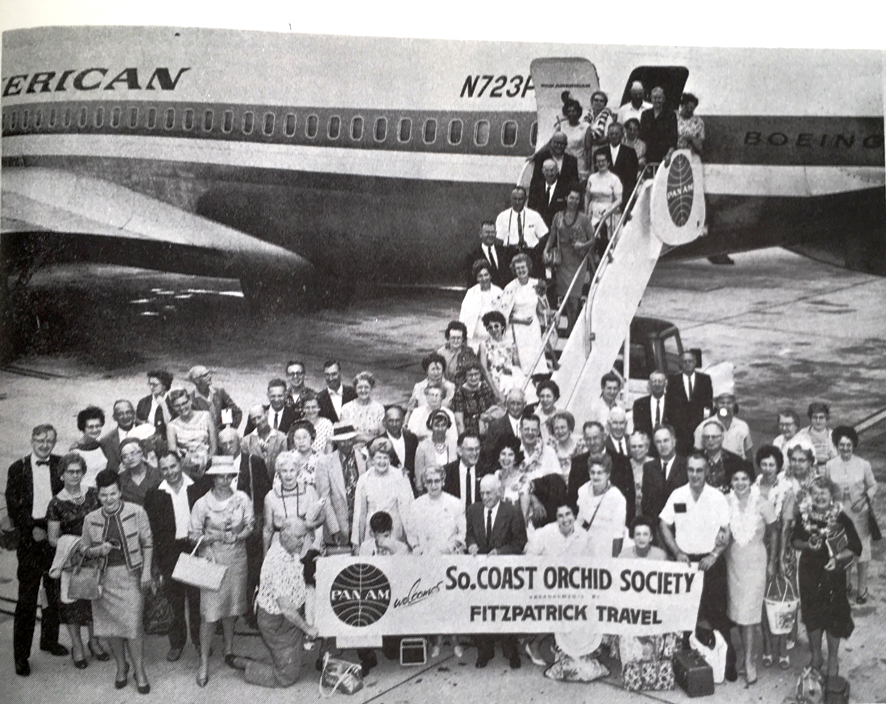
© 1966 OSSC
Group photo, SCOS charter tour, September, 1963. While Kay was most definitely in Hawaii during this tour, the family says they traveled separately (including Bruce Helin, their grandson) and combined the tour with other activities. Fred and Kay don't seem to be in the photo.
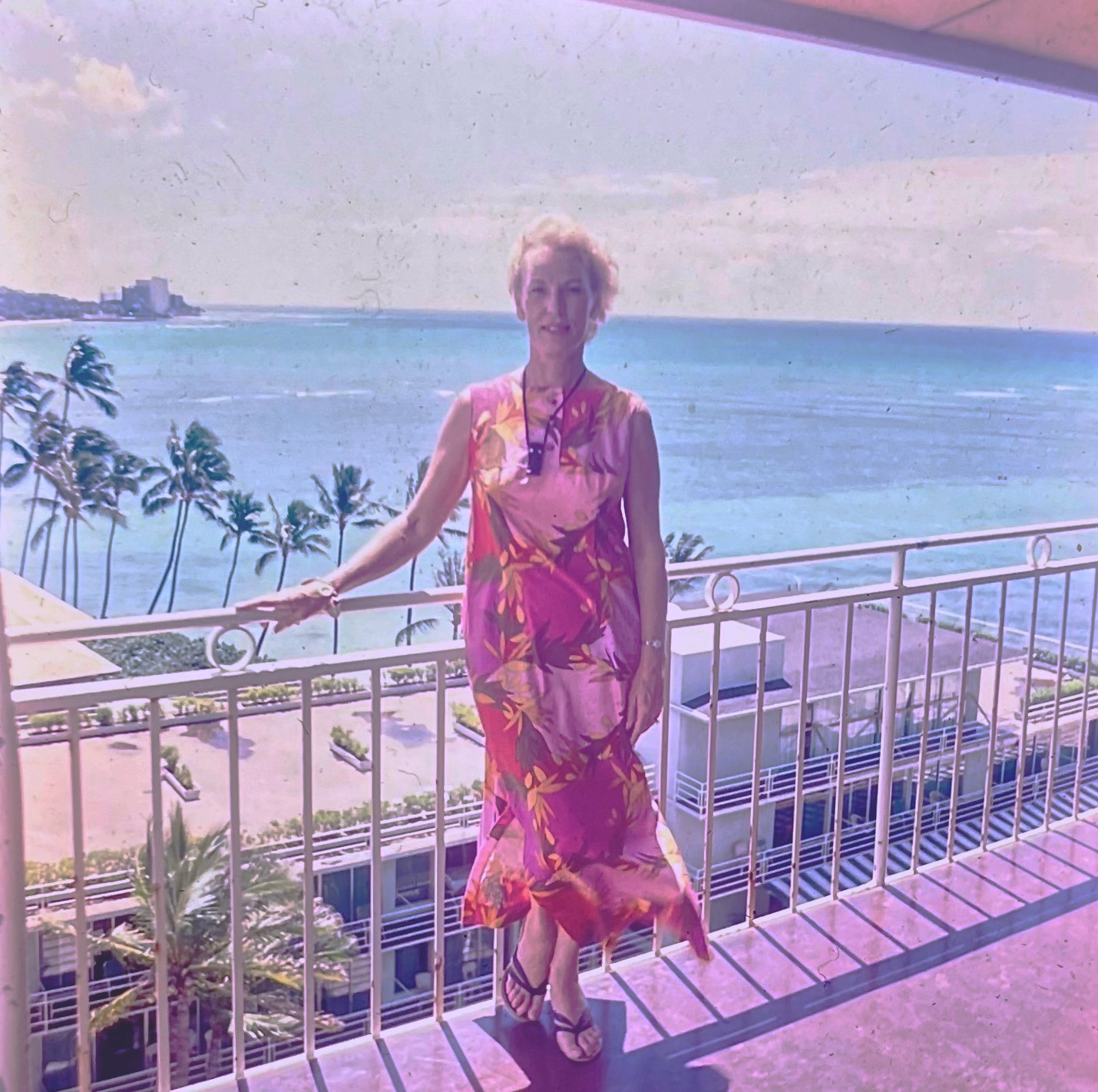
Kay on the balcony of her hotel overlooking Waikiki, September, 1963
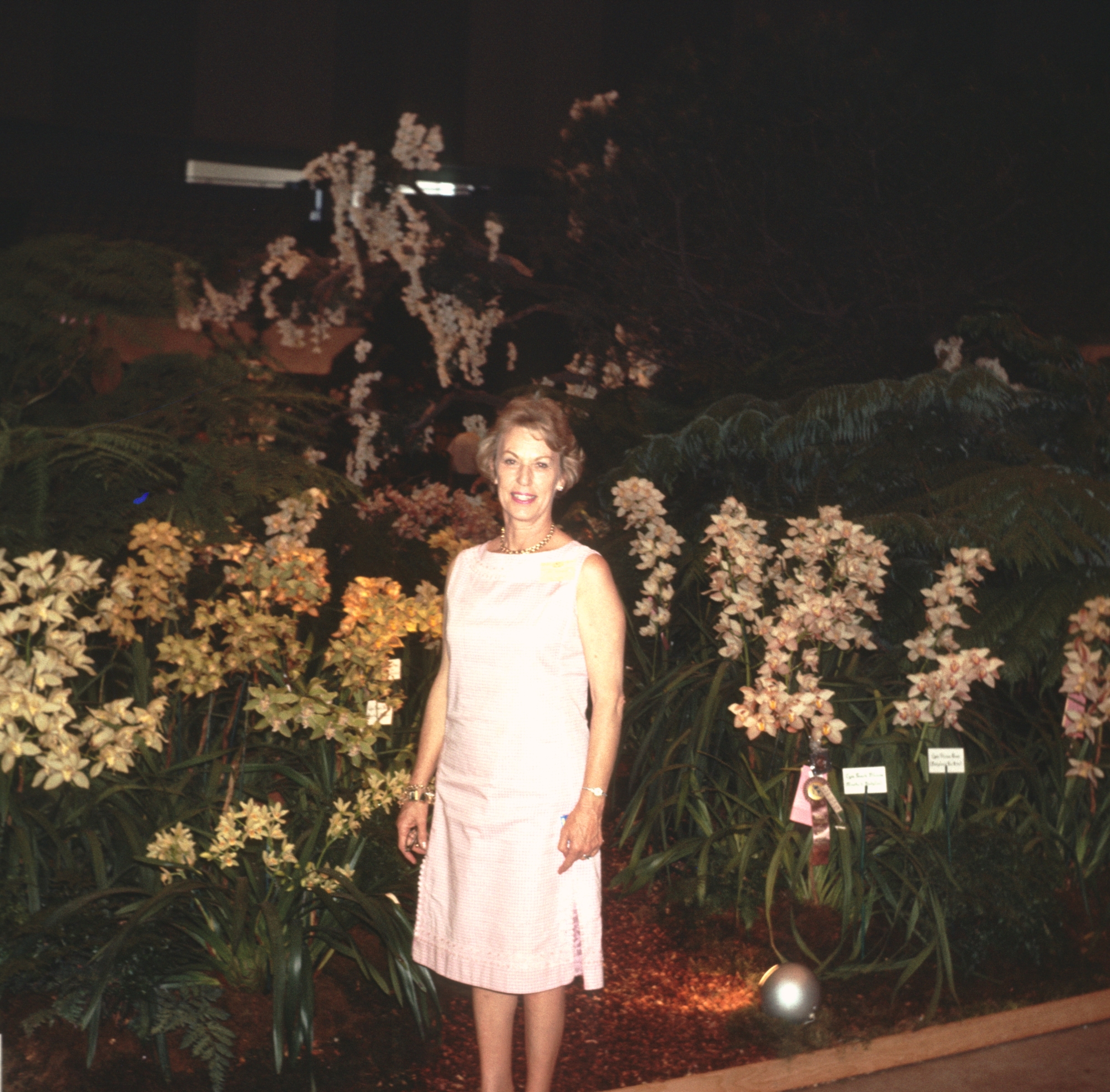
Kay at the 5th World Orchid Conference in Long Beach, April, 1966
Greenhouse helpers
Kay's husband was mainly responsible for loading and unloading plants for exhibits. "Glo" learned to grow orchids, too, and, after her marriage, maintained her own greenhouse. Kay's grandson Bruce Helin became a valued greenhouse helper, too, from an early age. Around 1960, or perhaps a bit earlier, Kay made the acquaintance of a sort of painter and handyman, Ferdinand ("Fred", "Fritz") Van Aken, a Dutch citizen of Belgian descent, born and raised in Indonesia, from a family of artists that traces their origins all the way back to Hieronymus Bosch Van Aken the Elder. "Fritz" had settled in the Los Angeles area around 1960, and found a job managing the physical plant at the Roosevelt Hotel in Hollywood. Perhaps Kay was looking for a house painter or a handyman, but soon "Fritz" was Kay's trusted helper in the greenhouse, virtually a member of the family, and also her de facto artist in residence. He signed his paintings "F Van Aken". Several of them appear as backgrounds or subjects in Kay's slide collection, and those paintings are still in the family.
"Fritz" had several brothers and sisters. One of his brothers, Laurent Edward Van Aken, was a well-known artist in Indonesia. When Laurent wanted to emigrate to the US, Kay and Fred sponsored him. He arrived in the US in September, 1964, bringing with him a group of his oil paintings of scenes from the Bali countryside, soon to adorn many walls in Kay's house, figuring prominently in many of her slides. Laurent's career in the US did not last long, as he died in 1969.
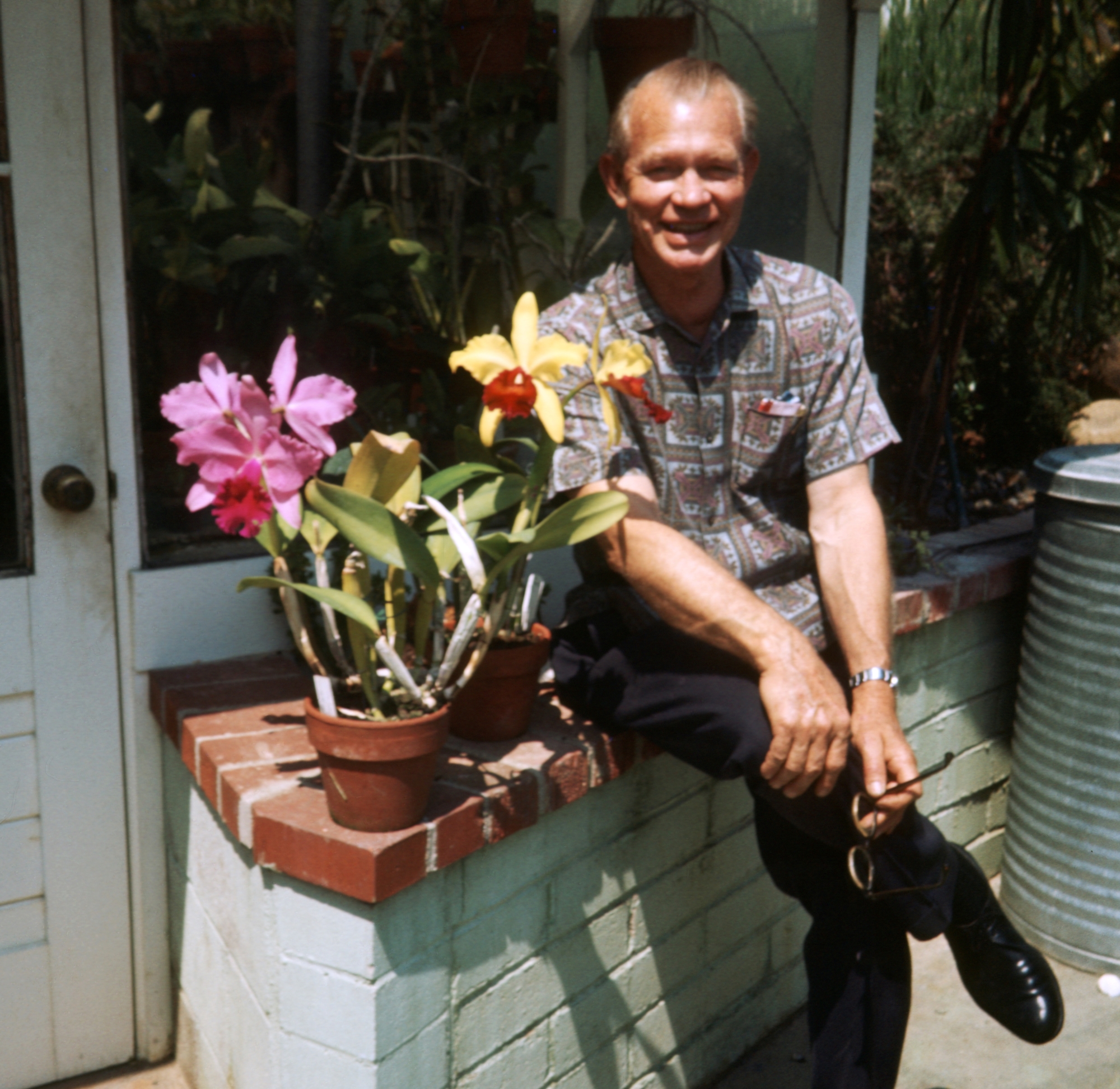
Ferdinand "Fritz" Van Aken in front of Kay's greenhouse, August, 1965
Glimpses of the Southern California orchid network
Kay was a regular patron of many orchid businesses in the Los Angeles area. In the 1960's, there were many of these operations, most little known today. Among them, "The Ilsley Orchids" (Philip Ilsley, the "swimming pool magnate"), Westenberger Orchids (Dr. Lorenz Westenberger and his wife Theodora, their manager in 1960 Viviano Lozoya, but by about 1961, Lozoya was the chief grower for Ilsley), Orchid Company of Altadena (on the site of the former Orchid Research Company, and at one point involving Hans Gubler), Joseph Ozzella, Clark Day, Jr., Murray Spencer, Paul Dorn, Davey Orchids, Frank Fordyce, Arthur Freed Orchids (chief grower Amado Vasquez, who later became owner of that company, renamed Zuma Canyon Orchids), Orvor Orchids in El Monte, Fricker's Orchids, Harry Rapella, John Asder... the list is very long! Kay used many of these businesses for sowing and flasking services, and she purchased and traded plants with most of them.
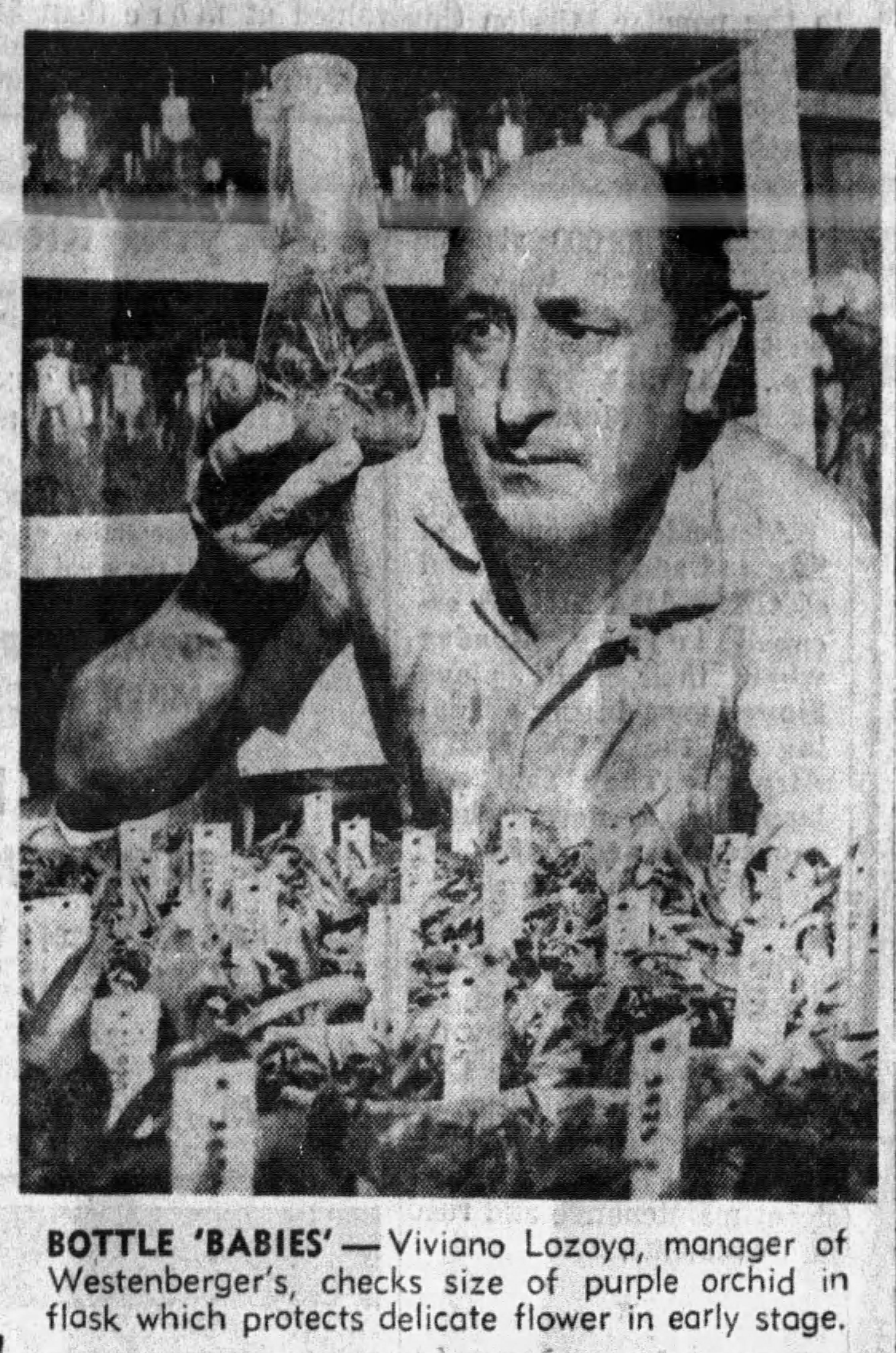
© 1960 Los Angeles Times
Viviano Lozoya with flask of orchid seedlings, Los Angeles Time, November 27, 1960. In those days, orchid flasks were actual glass Ehrlenmyer flasks, not the disposable plastic bottles used today.
Kay's registered hybrids
Not surprisingly, many of the hybrids bear names with astronomical references, in honor of her daughter's career in astronomy. Of the over 100 crosses that Kay is known to have made, she registered only 19. She also registered one cross originated by Masatoshi Miyamoto, who was famous for his dislike of paperwork. Many of his crosses, such as the famous Blc. Toshie Aoki, were registered with his permission by Southern California orchid growers. (Blc. Toshie Aoki was registered in 1980 by former SCOS President Dr. A. J. Tharp, another story altogether.)
- Blc. Mellow Vista, 1966
- Blc. Francis First, 1968
- Pot. Kadidit, 1968
- Blc. Tycho’s Touch, 1970
- Lc. Prism Palette, 1973
- Blc. Color Equation, 1973
- Blc. Cosmic Gale, 1973
- Slc. Comet Seeker, 1974
- Blc. Glo Helin, 1974
- Blc. Bruce Helin, 1976
- Blc. Helin Asteroid, 1976
- Pot. Kay’s Bouquet, 1976
- Blc. Sea Green, 1976
- Blc. Sea of Gold, 1976
- Pot. Candy Kisses, 1977
- Blc. My Souvenirs, 1977
- Blc. Clown Francis, 1980
- Blc. Great Island, 1984 (originator Masatoshi Miyamoto)
- Blc. Alfred Hibbs, 1987
- Blc. Pasacentennium, 1987
Hybrids originated by Kay but registered without credit by others
The list of Kay's hybrids registered by others may be even longer than what we have been able to document here. The list includes hybrids for which Kay's notes and slides provide evidence that she made the cross, and in most cases also that she harvested the pod and turned it over to someone for processing, and that seedlings were produced. In some cases, we have her notations in nursery catalogs where she notes that she had made the cross. In others, there is evidence from correspondence. Kay's records are certainly incomplete, and we have to assume that some of her crosses were marketed in catalogs that we have not yet discovered. The state of the evidence developed during our study of the archive is summarized in a spreadsheet and a pdf file.
- Blc. Pride of Salem, Bracey, 1966
- Slc. Allgold, McLellan, 1966
- Lc. Memoria Bertha Berry, Costal Gardens, 1970
- Blc. Millie Sullivan, S. J. Sullivan (orig. Landamar), 1970
- Lc. Platinum Sun, Rex Foster (orig. Fordyce), 1973
- Slc. Fire Wagon, McLellan, 1973
- Slc. Gloria Jesurún Leyba, Ab. Jesurún, 1973
- Lc. Mime, McLellan, 1974
- Lc. Imperial Torch, McLellan (orig. Fordyce), 1974
- Lc. Ana Maria Duveen, R. M. Hamilton (orig. Ilsley), 1974
- Blc. Enchanted Vista, Stewart, 1982
- Lc. Mindy Sullivan, E. B. Horton, 1982
- Lc. Excellorama, Stewart, 1984
- Lc. Prism Rainbow, Fordyce, 1988
- Lc. Wora, Dawson (orig. Beall), 1990
- Lc. Hawaiian Bonnet, Kodama, 1997
- Slc. Quadzac, A. Gavurin (orig. unknown), 2004
- Slc. Kelly Yuka, R. J. Kinukawa, 2008
A hint of Kay's many unregistered hybrids
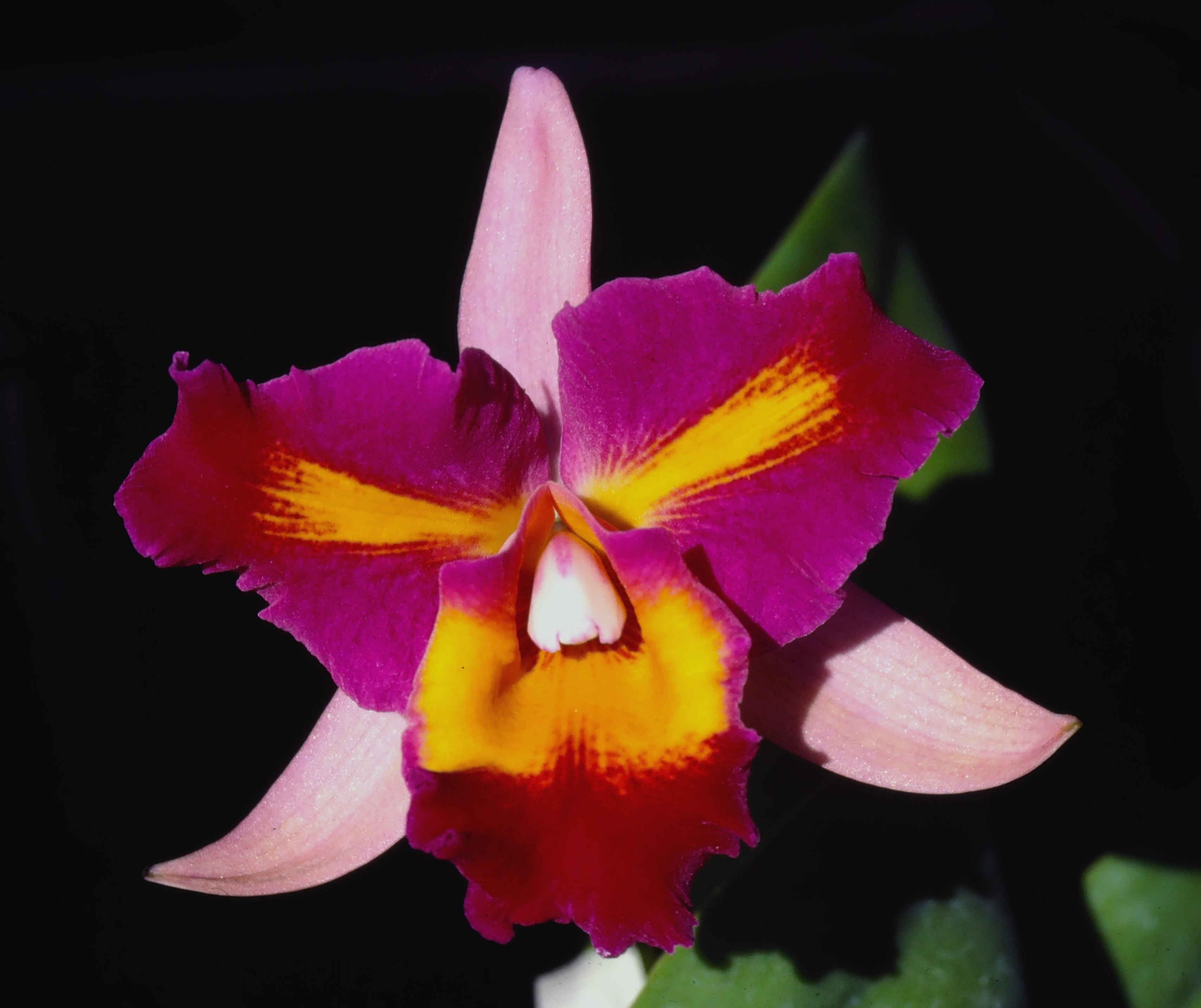
© 1991 Frank Fordyce
Pot. (Fortune Teller × Lc. Colorama 'The Clown') 'Comet's Tail', never registered. Kay's notes show the cross was made September 28, 1979, and she photographed the seedpod. Frank Fordyce listed seedlings for sale under his cross number 2520 as late as January, 1986. Photo from Frank Fordyce slide collection, Huntington Botanical Center.
Copyright 2024 South Coast Orchid Society, Inc.